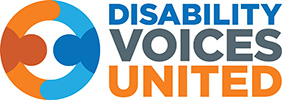This is a stressful time and we know this must be scary and confusing for you. It is for all of us. The best thing is for you to understand how to keep yourself healthy. You will also be asked to stay at home much more and maybe all the time. But this won’t last forever and we will give you many ideas of how you can keep safe and busy during this time.
Dr. Clarissa Kripke, Director of the UCSF Office of Developmental Primary Care, advises:
“Protecting yourself when you are out is possible if you know how coronavirus is, and is not spread. It can enter through your mouth, nose or eyes. It is spread in droplet nuclei (tiny spit and mucous droplets) that are heavy, and don’t travel more than 6 feet. If someone more than 6 feet away speaks, coughs or sneezes, it is unlikely to be a risk to you as long as you don’t touch surfaces where their mucous or saliva might have landed. If you do get closer or touch something that may be contaminated, don’t touch your face without washing your hands.
The virus doesn’t go through walls, doors or ventilation systems. It doesn’t infect water supplies. The virus isn’t hard to kill. Any disinfectant will work to clean surfaces and soap and water or hand sanitizer works fine for hands It doesn’t need to be anything fancy or industrial grade. Three tablespoons of chlorine bleach in a quart of water is cheap, easy to find, and will work fine. You can clean surfaces before touching them and use tissues as a barrier when touching things that other people have probably touched such as door knobs, poles on the subway, rails, and elevator buttons. We don’t know exactly how long it can live on a surface—hours to a few days.
It does not go through skin. It is not spread through food chains. Reheating takeout food will eliminate any remote risk posed by someone sneezing on your dinner. And if you are washing as much as you should, your skin will dry out. Use a moisturizer frequently to prevent skin breakdown.”
Several agencies have created plain language documents and videos to explain what Coronavirus is and how to keep safe for people with intellectual and developmental disabilities.
COVID-19 Prevention Recommendations from the State Council on Developmental Disabilities
California Department of Public Health – Protect Yourself and Loved Ones
The Green Mountain Self-Advocates in Vermont have produced information written by people with developmental disabilities.
The WITH Foundation has an interview with Dr. Clarissa Kripke of the San Francisco Office of Developmental Primary Care about COVID-19 and people with disabilities.
The American Public Health Association has developed videos for people with disabilities:
Hand Washing:
Sneezing and Coughing:
Disability Voices United has developed a video on making a quick fabric mask out of a bandanna and hair ties:
The California State Council on Developmental Disabilities has a series of 4 videos on the coronavirus by and for self-advocates.
The Autism Educator has developed a social story that can be adapted.
Carol Gray has a social story on Coronavirus.
BrainPop has a movie that helps explain Coronavirus:
June Isaacson Kailes provides Tips for Emergency Use of Mobile Devices.
Your legal and civil rights follow you into the hospital. CommunicationFirst has created a COVID-19 Communication Rights Toolkit.
Prepare For Your Care has created an Advanced Healthcare Directive for California that you can use to prepare in case you get very sick, have to go to the hospital, and cannot make decisions for yourself. This form lets you pick someone to make decisions for you. It also lets you tell that supporter what you would want in different medical situations ahead of time.
The Health and Human Services agency of the State of California has issued a letter stating people with physical, intellectual, and developmental disabilities can bring 1 supporter in to the hospital during this time period:
The presence of a support person is essential to patients with physical, intellectual, and/or developmental disabilities and patients with cognitive impairments. CDPH recommends that one support person be allowed to be present with the patient when medically necessary.
For hospitalized patients, especially with prolonged hospitalization, the patient or family/patient representative may designate two support people, but only one support person may be present at a time.
All support persons must stay in the room and be asymptomatic for COVID-19 and not be a suspected or recently confirmed case. Support persons may be screened prior to entering the clinical areas. Support persons must comply with any health facility instructions on personal protective equipment.”
Health and Human Services All-Facilities Letter
If you live in Los Angeles and are having trouble paying rent, have lost your job, or if you’re not safe, LA Represents wants to help. They are working to connect Los Angelenos with free legal assistance.
